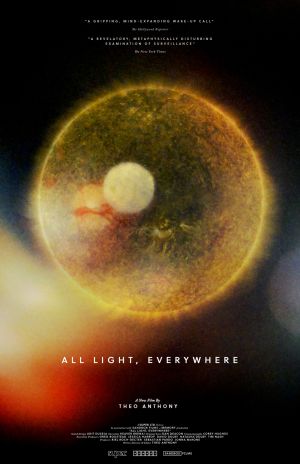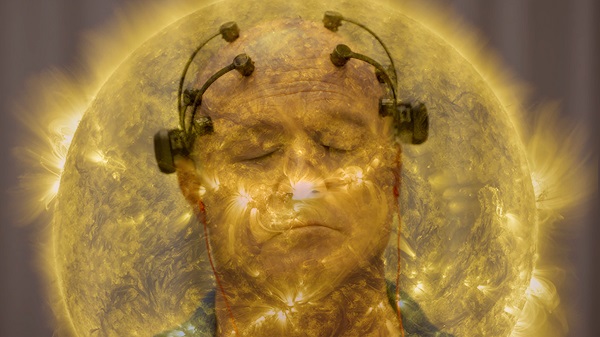Doc Corner: Sundance hit 'All Light, Everywhere'
 Wednesday, June 2, 2021 at 4:30PM
Wednesday, June 2, 2021 at 4:30PM By Glenn Dunks
 For an essay film, it makes a lot of sense for All Light, Everywhere to be full of ideas. It’s been a long time since my essay writing days, but I generally think that a lot of ideas is a good place to start. But also like an essay, it could probably have used another go around the editing block. There are a lot of promising threads in Theo Anthony’s film, but the director of Rat Film can’t quite weave them together into something that transcends its (very smart in theory) concept.
For an essay film, it makes a lot of sense for All Light, Everywhere to be full of ideas. It’s been a long time since my essay writing days, but I generally think that a lot of ideas is a good place to start. But also like an essay, it could probably have used another go around the editing block. There are a lot of promising threads in Theo Anthony’s film, but the director of Rat Film can’t quite weave them together into something that transcends its (very smart in theory) concept.
In many ways, Anthony’s film comes across as a traditional documentary about the rise of technology in community policing—predominantly bodycams and surveillance drones. At least initially. This segment, the doc’s most prominent through-line, is often very interesting if maybe a little repetitive...
However, in the film’s most startling stroke of genius, we get to witness the filming of a video by Steve Tuttle, spokesperson for Axon. They are the manufacturer of bodycams that occupy a 85% share of the American police force market. The footage looks like the sort of uber-branding you would see at a shareholder conference or in a staff induction video. You can practically feel the twentysomething marketing team enthusiastically pitching the idea as something hip for investors. Tuttle is like Tom Cruise in a Scientology recruitment video.

Not content to leave his fidgety brain there, Anthony adds more layers onto his film. Interspersed throughout its already two-pronged narrative are a variety of other mini-features and tangents— often with a somewhat avant-garde approach. They cover a range of topics, although all come back to the history of cameras and broader concepts of ‘seeing’. There’s the one about pigeons, and Venus travelling across the face of the sun. There’s even a framing device where strangers are hooked up to brain-monitoring technology and their responses to imagery are gauged… somehow. At one point inanimate objects begin to levitate.
Initially, his experimenting works and invigorates the film. But eventually All Light, Everywhere becomes cluttered and convoluted. Strangled by ideas that sound good on paper, but which more often than not come off as flailing about for profundity. Keaver Brenai’s monotone, academic narration doesn’t help.
Which is a shame, because a lot of what the film shows is extremely interesting and relevant. A training course for some of Baltimore’s uniform officers into how (and importantly why) to operate bodycams ultimately quite tellingly comes down to defending “us” versus “them”. That most of the officers are older men and black woman goes unexplored. A later splinter to a Baltimore community meeting facilitated by Ross McNutt—CEO and founder of Persistent Surveillance Systems—erupts as he attempts to convince black citizens of Baltimore to the benefits of his aerial super-surveillance.

Race and class are obvious recurring themes throughout, which makes its unrefined structure even more frustrating. All Lights, Everywhere shares more than a little bit in common with last year’s excellent Coded Bias, which investigated the way technology is inherently ‘coded’ towards white skin tones. That film by Shalini Kantayya was far more tightly structured than Anthony’s, which rather awkwardly places its fragments side-by-side in ways that make little sense. The doc ends with an epilogue about high school students producing a television pilot for a class assignment. The title cards explain this was to be a whole different narrative strand that was originally planned, but was ultimately excised. Except, I guess, it’s not. Because it’s here tacked on to the end. Maybe the film needed to kill a few more of its darlings.
Towards the end of the film (before the epilogue), one of Anthony’s threads (the one about the people hooked up to brain monitors) poses the (entirely reasonable) suggestion that we are to come to own conclusions about what we have just witnessed. Consider it a smart wink at the camera to bring it all together and maybe excuse some of its editorial choices, but it just didn’t all work for me.
Release: In theaters this June 4.
Oscar chances: This isn't the sort of film that Oscar typically goes for so I'd be surprised to see it make even the long-list. However, critics awards and the likes of Independent Spirits will likely embrace it.
 Doc Corner,
Doc Corner,  Review,
Review,  Theo Anthony,
Theo Anthony,  documentaries
documentaries 

